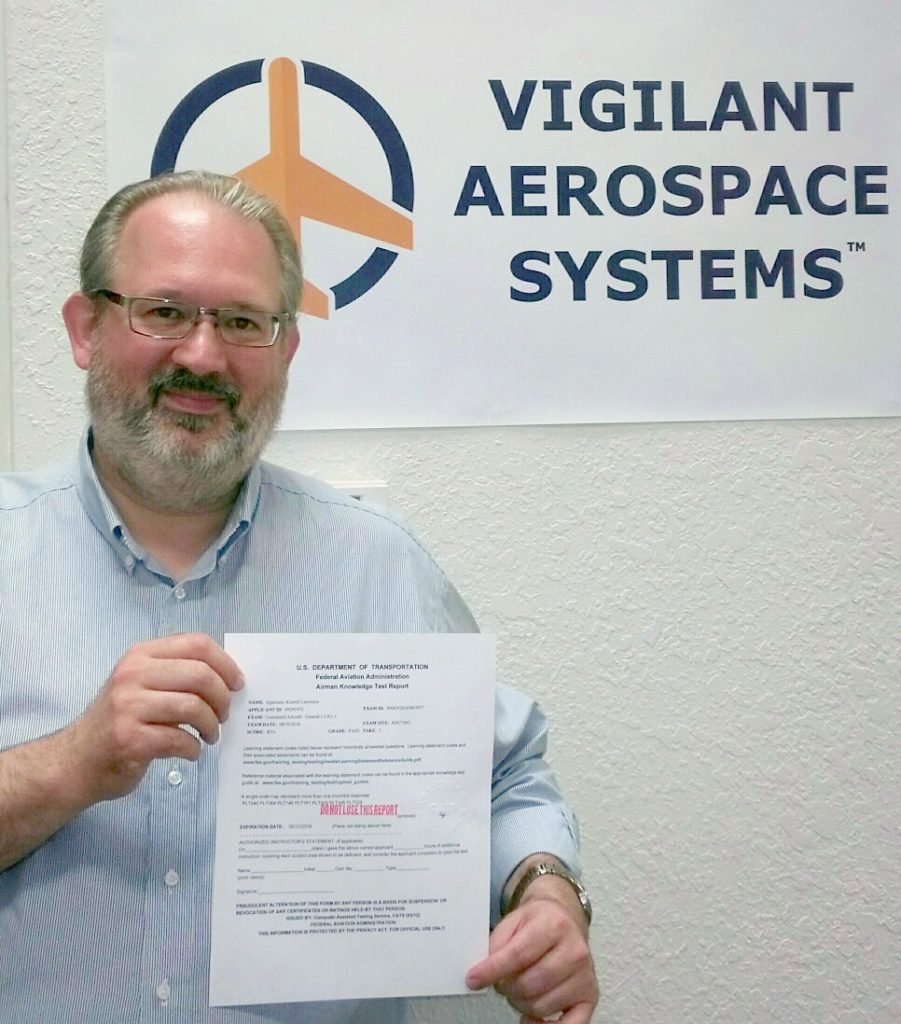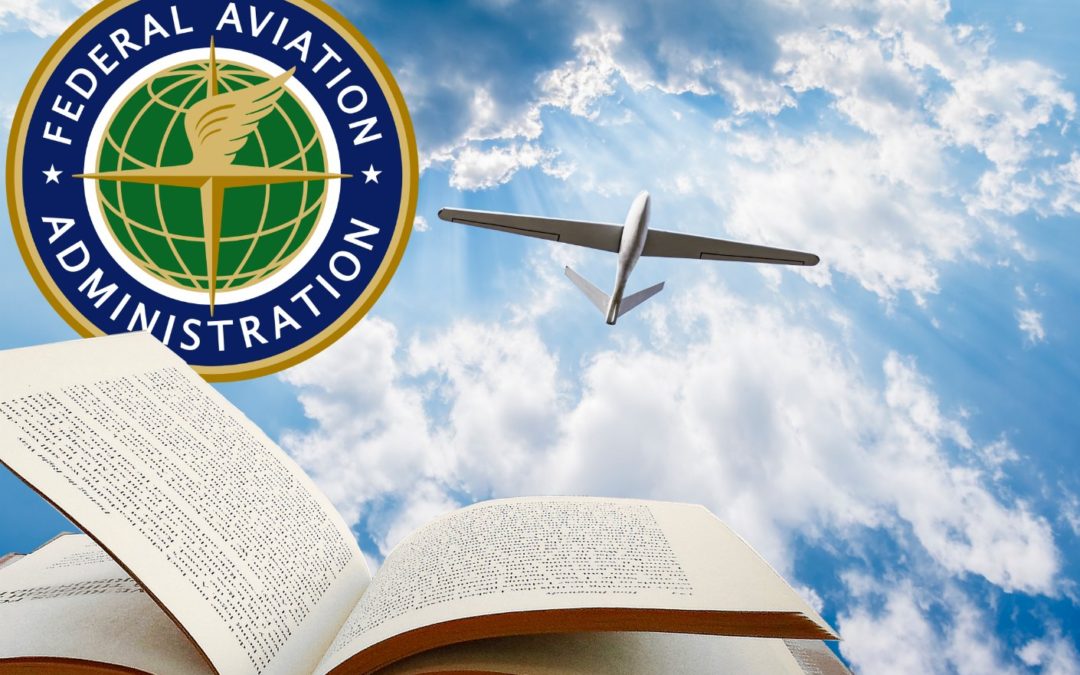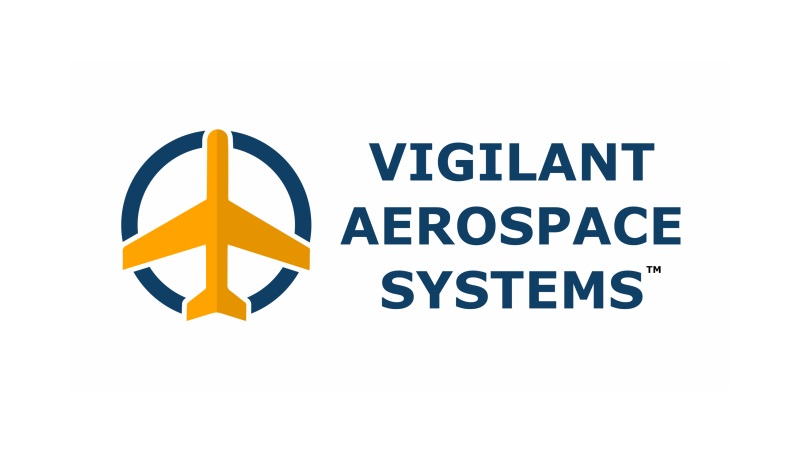 Here are some comments on the new FAA Part 107 UAS Aeronautical Knowledge Test by our CEO, Kraettli L. Epperson, who took and passed the exam this morning in the first few hours that the exam was available and as one of the first test takers in the US.
Here are some comments on the new FAA Part 107 UAS Aeronautical Knowledge Test by our CEO, Kraettli L. Epperson, who took and passed the exam this morning in the first few hours that the exam was available and as one of the first test takers in the US.
Test Prep
First, be sure to read the FAA study guide for this exam carefully and to distribute your study time proportionally across the areas of study based on the weights given in the study guide. Without going into too much detail about the exam, I will say this: You need to study all of the available materials to pass the exam. Give yourself several days to review, re-review and digest. Test yourself with the sample exam questions and be sure that you understand them. Make up some additional questions in the style of the sample questions. In addition to the official FAA study guide, be sure to read the additional study guides that have been provided by third parties. On our UAS Pilot Resources page, we have included links to the best FAA and third party study resources we’ve found.Taking the Exam
A few comments on what it was like to take the exam:
- You are given 2 hours to complete the exam’s 60 questions. This is a computerized exam, given in an FAA-approved testing center. There are no books or written notes allowed and I left my briefcase and cellphone outside the testing room. They gave me a simple pocket calculator, pencils and scratch paper, as well as the test reference book that contains the diagrams and charts referenced in the examination. They shredded my scratch paper at the end of the exam.
- The online testing software was easy to use and allows you to jump back and forth between questions and quickly mark questions to review again later, whether you’ve answered them or not. The software uses a left-hand list of questions, labeled by number. I was very pleased with how easy the testing software was to use for my particular style and preferences when taking tests.
- As anyone who knows multiple-choice test-taking strategy will tell you, answer the questions you are confident about first, and then go back to re-examine questions about which you are unsure. There are no penalties, so at least guess on every question, leaving no blanks. Each question is weighted equally, so answering as many as you can the best that you are able is the most successful strategy.
- This exam requires a 70% to receive a passing score. This means that out of 60 questions, you need 42 correct answers and you can miss up to 18 and still pass. (I passed by a very healthy margin.)
- In my case, I completed the test in about 1 hour and then spent another 30 minutes reviewing a few questions that needed a second look. I finished with an extra 30 minutes to spare and submitted the exam for scoring. I saw other test-takers finish in an hour.
- Scoring is instantaneous and you are given an opportunity to review the questions you missed, although you are not given the correct answers and are not allowed to take notes. Since there were only three choices on these multiple choice questions and I remembered the choices I’d made, figuring out how I messed up and got wrong answers was not difficult.
- The staff at the testing center were helpful and quick, despite having a steady stream of test-takers. This testing center happened to be situated adjacent to a regional airport in a house that had been converted into an office. It was a casual, pleasant environment.
- As I was leaving the building, another test-taker mentioned that he had taken it because he is an aviation instructor and was planning to teach a course on the unmanned certificate. He said he thought he’d gotten all of the questions correct and made a 100%, but he had learned that he actually made a 92%. This is a very good score, but he said he’d definitely found the exam more difficult than he expected.
- According to the study guide, if you initially fail the exam and need to re-test, you can take it again in 14 days. According to the test proctor giving the test on behalf of the FAA, you will get different questions each time you take the exam. I spoke to one exam-taker who said he had failed. He planned to take it again in 14 days.
Afterwards
A few comments on what happens after taking the exam:
- After you take the exam, you are given an exam report with an endorsement from the testing center. This report contains a unique number associated with your exam results. To receive your Unmanned Pilot Certificate, go to the FAA’s IACRA website and register as a new user, if you do not already have an account. (https://iacra.faa.gov/IACRA/)
- Fill out your application and insert the number from your exam report. The system will search for your exam report and associate it with your application. My testing center warned me that it would be 24 to 48 hours before the number showed up in the IACRA system, and they were right. It was almost exactly 48 hours before the exam report showed up. Once it did, I clicked twice and submitted my application. The entire process was electronic, including signatures, and was very easy. Now, you wait another 2 to 4 days for the application to be processed and for your temporary certificate document to arrive in your IACRA account. You can print that certificate and start flying. The permanent certificate arrives in the mail a few days later.


